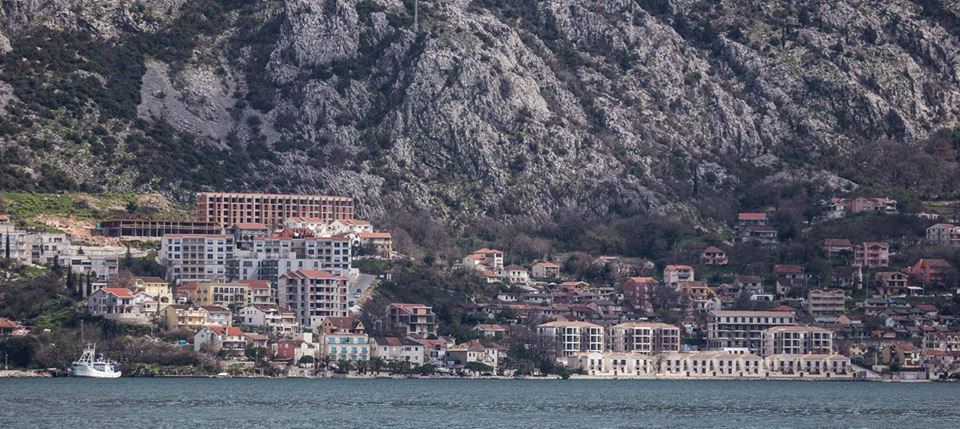January 30, 2019 - Dobrota is a small town on the shore of Kotor Bay, just next to the Old town of Kotor stretching for several kilometres along the picturesque coastline to the village of Ljuta. Once the famous naval settlement, Dobrota was one of the most beautiful areas of Boka Bay. Unfortunately, its unique cultural landscape was recently almost destroyed by inadequate and massive urbanisation. Ancient palaces of Dobrota’s captains are more and more challenging to discover between concrete buildings, growing from the sea to the slopes of mountains hanging the settlement from the north-east. But still, there are a lot of reasons to visit Dobrota and discover its ancient buildings, beautiful churches and hospitable people. Let us propose some of those.
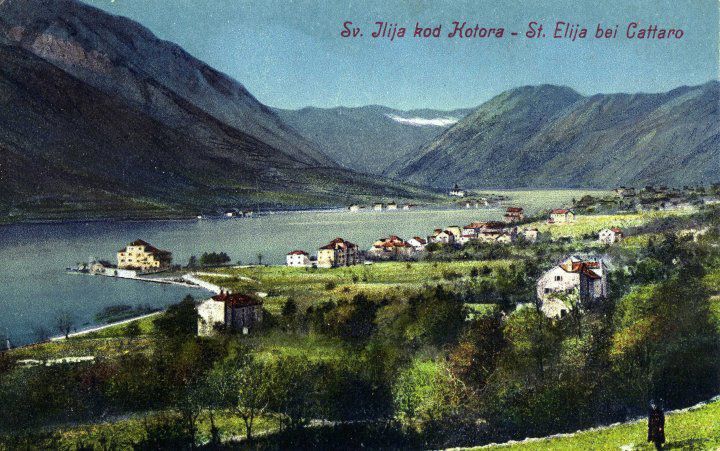
Dobrota in 19.century
The settlement of Dobrota was first mentioned in the 13th century as Dabratum. In the 14th century, it became a part of Kotor, being its suburb from 1371 to 1704. The greatest prosperity Dobrota reached from the 17th and 19th centuries is one of the most important maritime centres along the Mediterranean coast. There was a large pier, many ships, and almost everyone in the village dealt with naval work. Under the Venetian rule, in 1717 Dobrota gained the status of a seaside settlement thank to skilful seamen, ensuring the economic development of this area. Wealthy captains of local vessels built beautiful baroque palaces here, furnishing them with valuable furniture and decorations brought from all parts of the world. The beauty of those palaces contributed the beautiful terraced gardens in the backyard areas, full of local plants and exotic fruit and flowers brought from distant, overseas countries. Terraced landscapes over Bokelian shore settlements, their beauty and harmony were some of the primary reasons for the area of Kotor to become one of the UNESCO sites - precious heritage of humanity. Unfortunately, those terraces are mostly gone forever, giving the space for large concrete constructions built in the name of progress and tourist development.
Of about twenty gorgeous palaces by the sea, the most famous that have survived to our time are the houses of the noble families of Tripkovic, Dabinovic, Ivanovic, Radonicic and Milosevic. Some of those are today in private property, and some, such as the Radonicic palace, are housing public institutions.
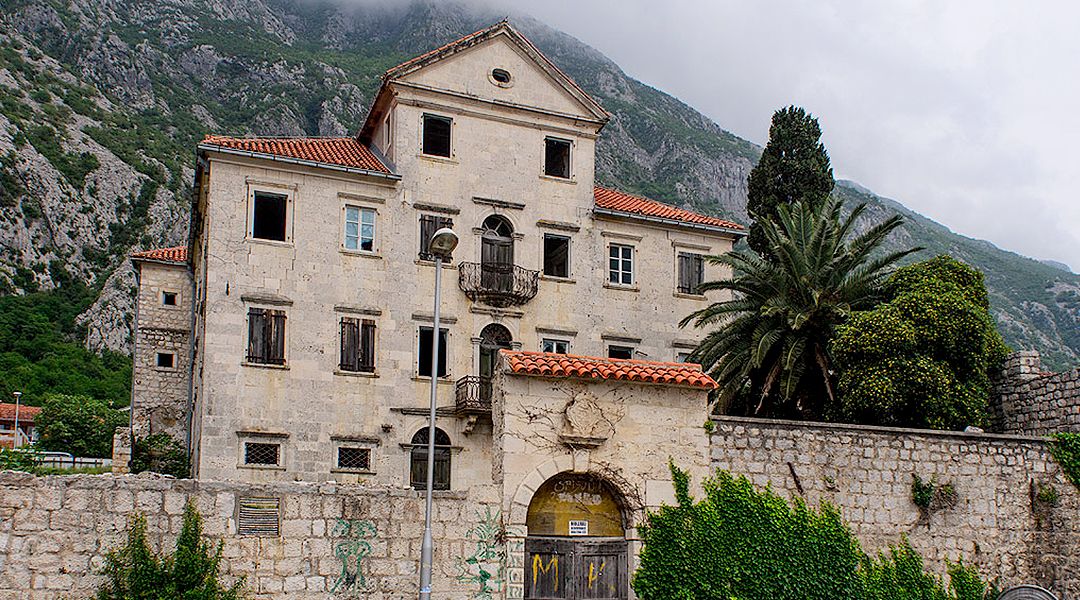
Palace Ivanovic, Copyright: waytomonte.com
These palaces stand today as a memory on times of fame and greatest prosperity of Dobrota and its famous captains, who became rich dealing with maritime trade. The Palace of the family Ivanovic is one of the most notable buildings along Kotor’s coast, built in the second half of the 18th century. The Ivanovic family was one of the richest of Dobrota - by the beginning of the XIX century they had 11 houses in the settlement. Thriven on sailing, in the 18th century there were 28 ships in their property, trading with Italian and Albanian ports. During the war between Venice and Turkey in 1714-1718, the Ivanovic family allocated part of their fleet for the liberation of Ulcinj from the Turks, for which they received praise from the Venetian governor Alvise Mocenigo.
The most famous members of this family were Marko and Jozo Ivanovic, who defeated the Turks in the battle near the Greek port of Piraeus in 1756. Their courage and skill shown in this battle brought them the status of knights of the Order of St. Mark of Venice. Palata Ivanovic still witnesses the power of its builders with its exquisite stone architecture. The entrance to the property characterises a stone gate, with the coat of arms of the Ivanovic family highlighted.
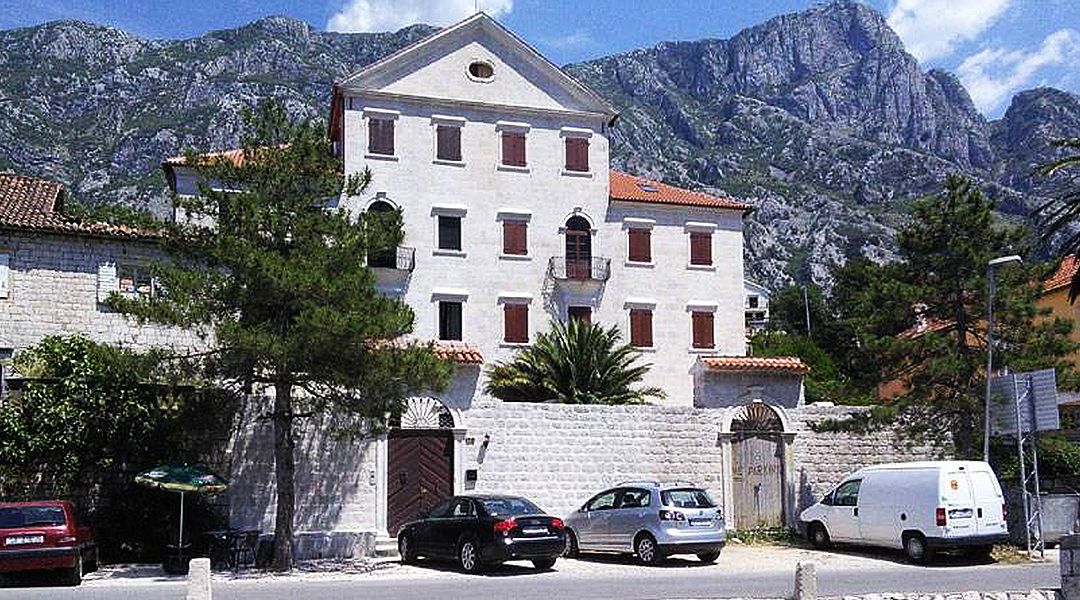
Palace Milosevic, Dobrota Copyright: waytomonte.com
The palace of the Milosevic family is also known as “Veliki Palac” due to the most significant dimensions among other buildings in the settlement. The sea captains, brothers Milosevic built it in 1828. The building is a four-story palace with a wide belvedere and late baroque features, surrounded by a stone wall of a fence, behind which there is a private terrace. It is the only palace in Dobrota with two different facades, the main one with a view of the sea, the rear one with a mountain view. And in the south-eastern part of the palace, there is an unusual corner tower with a cannon embrasure built in the style of a ship one. It was one of the six buildings owned by this family on the Dobrota’s coast. Family Milosevic was 12th in Dobrota for their wealth, the number of ships, seamen and captains, holding nine vessels in the 19 century.
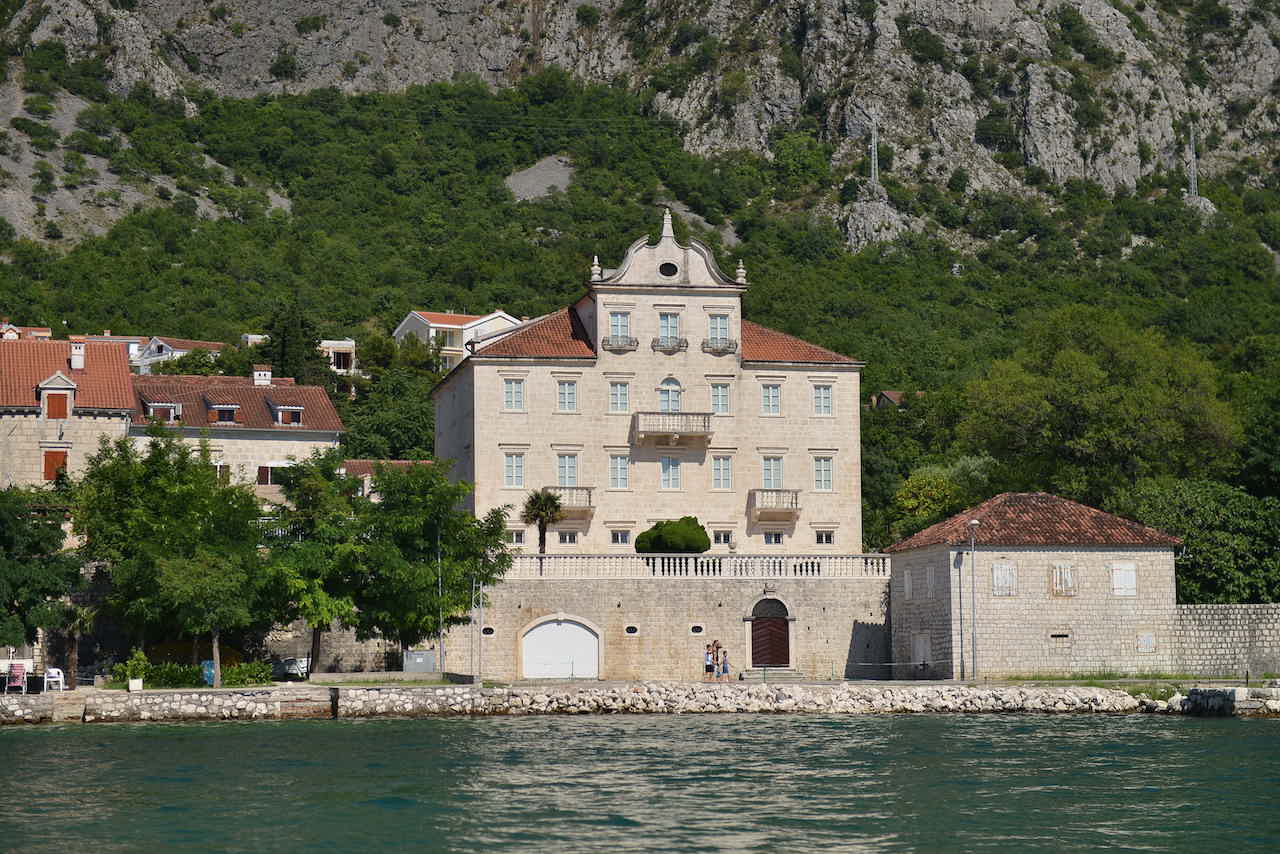
Palace Tripkovic, Copyright: Tourist Organisation Kotor
The majestic appearance and the greatest fame among all the "captain palaces" built in the area of Dobrota is the mansion of the Tripkovic family. They played an essential role in the life of Kotor, especially in trade, navigation, construction and culture. This family owned 18 vessels, and 63 of its members had the rank of the ship captain. One of them, Andrija Tripkovic, was the head of the local commune and was a member of the Kotor administration. He built the palace a bit away from shore at the end of the 18th century, with a sea dock on the coast in front of the palace. The palace itself, made of Korcula stone, has three floors and a belvedere with a baroque pediment crowned with a small turret. As most of the castles in Dobrota, Tripkovic’s house also has a defending fence made of stone, marked by the family arm of a coat.
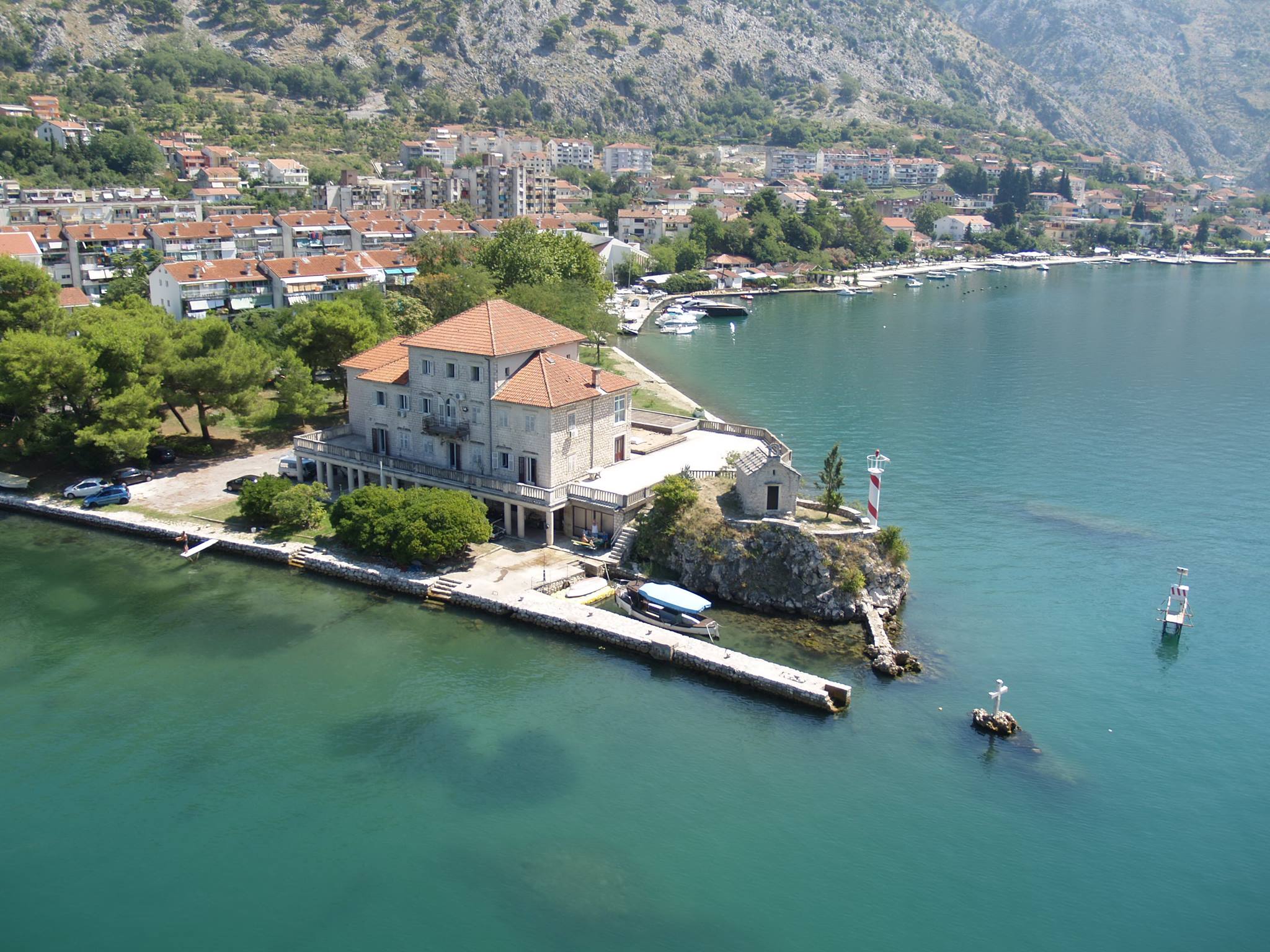
Palace Radonicic- Institute for Marine Biology Kotor, Copyright: Boka News
We have already mentioned the house of the family Radonicic. This beautiful palace, today the building of the Institute of Marine Biology, was built in the 19th century. Palata Radonicic stands on the Plagenti peninsula, where, beside the palace, there is the Romanesque church of Sv. Elijah, one of the oldest monuments of architecture of Montenegro built in the 11th century and preserved till our days. The family Radonicic bought the entire Plagenti peninsula from the municipality in 1808, during the French rule. In 1847, Petar II Petrović Njegos lived with his friend, Captain Krsto Jozo Radonicic. The palace has an original Baroque conception of the ground floor, the two floors and the last floor in the form of a belvedere. In 1937 the castle bought the "Jadranska Straza" for its needs. At the time of adaptation, 16 newly-built pillars at the ground floor level completely changed the appearance of the typical Bokelian palace. After the Second World War, the building served as the Central Maritime School in Kotor, and today, as mentioned, there is the Institute of Marine Biology. The palace was renovated in 2012, and at the moment there are works in progress to transform its ground floor into
the first and only aquarium in Montenegro to be open in summer 2020.
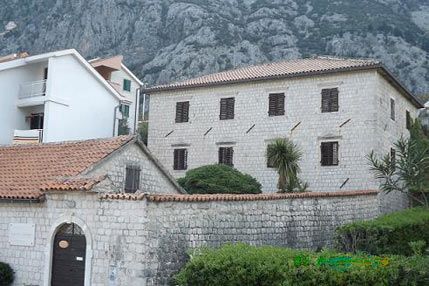
Maritime Library in Dobrota, Copyright: the University of Montenegro, Faculty for Maritime Studies
Impressive for its architecture and historically significant building of Dobrota is also the palace of the Maritime Library, an integral part of Maritime Faculty Kotor. Thanks to a ship-owner from Monaco, Captain Bozo Dabinovic, the library was moved to this palace in the late eighties. Benefactor, captain Dabinović, coming from noble maritime family Dabinovic from Dobrota, provided funds for the adaptation of this building exclusively for the needs of Maritime library and dedicated this donation to the memory of his father, Professor Antun Stijepov Dabinovic.
This palace is a famous historical monument of Montenegro as well. Right here, in the building of Maritime library, the unification of Boka Bay and Montenegro was voted on the joint assembly held in October 1813. On this occasion, a joint government named Central Commission was formed (with Petar I Petrovic as a chairperson), and for this reason, the building of Maritime Library is known as the building of Central Commission. The memory on events associated with the unification of Boka and Montenegro, with the Library site as a historical scene hosting one of the most significant past events in our region at the beginning of XIX century, is kept in the memorial room of Maritime library.
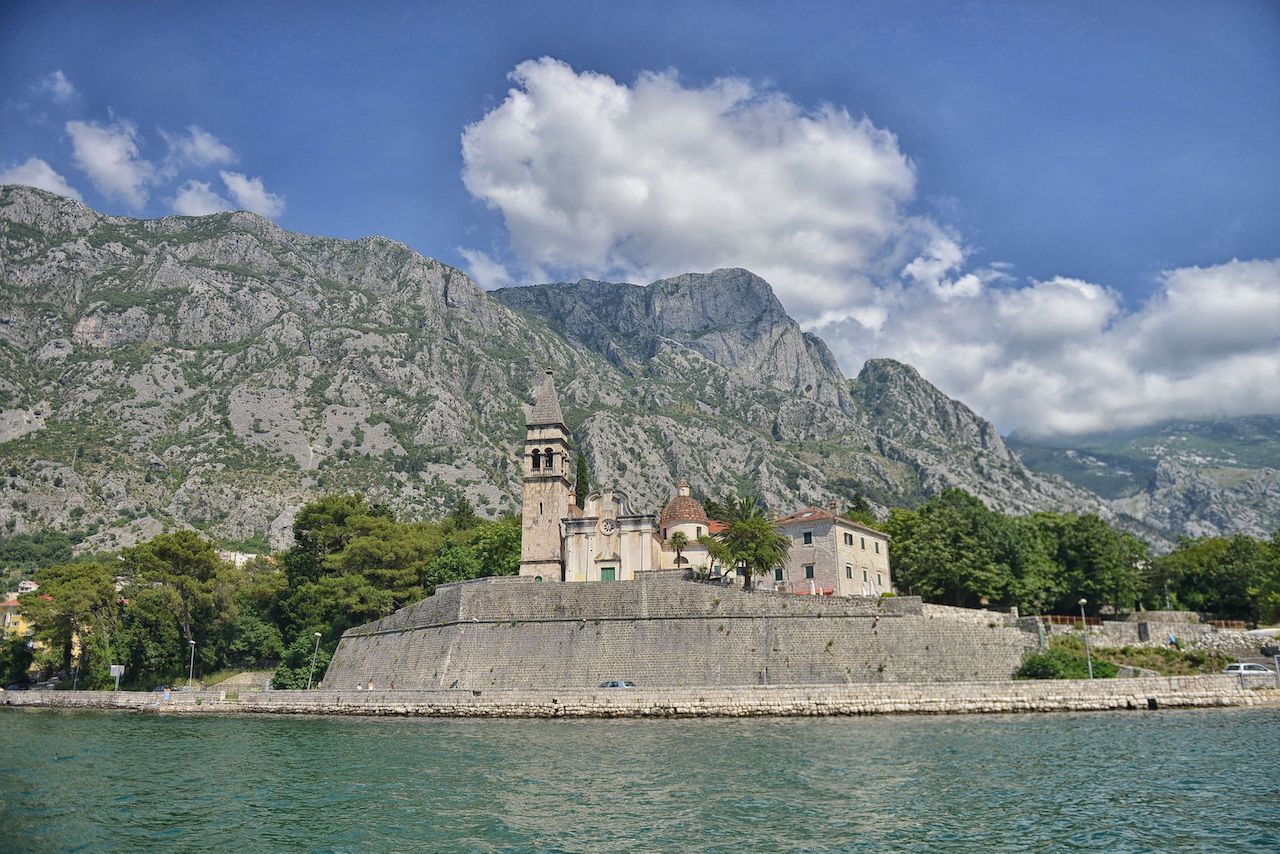
Church of St.Matthew, Dobrota, Copyright: Tourist Organisation Kotor
Dobrota hides several ancient churches. Parish church of St. Matthew marks in a prominent place along the coastline, separated from the coast by supporting stone ramparts. The Baroque church dates back to the 17th century and among the valuable relics of the church is the famous icon of Giovanni Bellini "Madonna and Child". Further towards the settlement of Ljuta, in the part of Dobrota called Sveti Stasije, stands one of the highest bell towers in Boka Bay, of the church of St. Eustace, built in 1773. The church keeps a precious and exciting collection of 52 canvases from the 17-18th century and a unique ancient mosaic that adorns the altar.
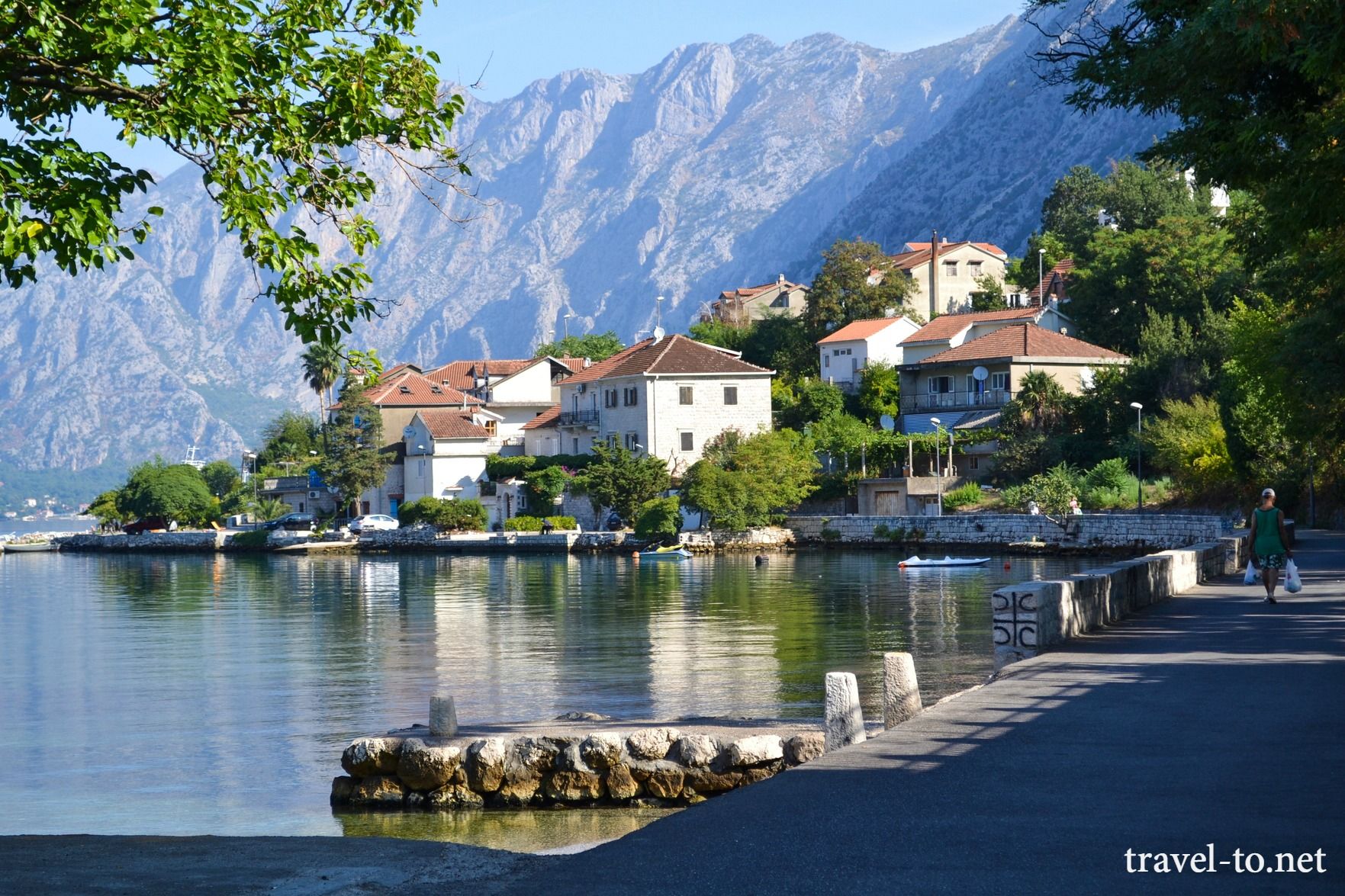
Dobrota shore, Copyright: travel-to.net
Today Dobrota is a popular tourist destination. When you are by the sea, you are looking at the sea. And somehow could take your head away of the giant newly built houses transforming this beautiful part of Boka Bay into the playground of construction mafia. The state of Montenegro and the previous local government allowed the destruction of Kotor’s landscape, so the area is in danger of being excluded from the list of natural and cultural heritage of the world. Unfortunately, Dobrota has a potential for development of new tourist offer.
But still, there is some hope. It stands in the well-known hospitality of the people of this area. Thanks to the inhabitants, tourists finding themselves here even have the possibility to fill the harmony that once reigned in this zone of charming stone houses with their dry-stone Mandraci, small beaches and berths for boats. Along the Dobrota coast, there are a lot of cafes, small taverns and restaurants offering delicious local food. If you are looking for peace and proper rest, this could be a great choice all year long.
 Dobrota in 19.century
Dobrota in 19.century  Palace Ivanovic, Copyright: waytomonte.com
Palace Ivanovic, Copyright: waytomonte.com  Palace Milosevic, Dobrota Copyright: waytomonte.com
Palace Milosevic, Dobrota Copyright: waytomonte.com  Palace Tripkovic, Copyright: Tourist Organisation Kotor
Palace Tripkovic, Copyright: Tourist Organisation Kotor  Palace Radonicic- Institute for Marine Biology Kotor, Copyright: Boka News
Palace Radonicic- Institute for Marine Biology Kotor, Copyright: Boka News  Maritime Library in Dobrota, Copyright: the University of Montenegro, Faculty for Maritime Studies
Maritime Library in Dobrota, Copyright: the University of Montenegro, Faculty for Maritime Studies  Church of St.Matthew, Dobrota, Copyright: Tourist Organisation Kotor
Church of St.Matthew, Dobrota, Copyright: Tourist Organisation Kotor  Dobrota shore, Copyright: travel-to.net
Dobrota shore, Copyright: travel-to.net 